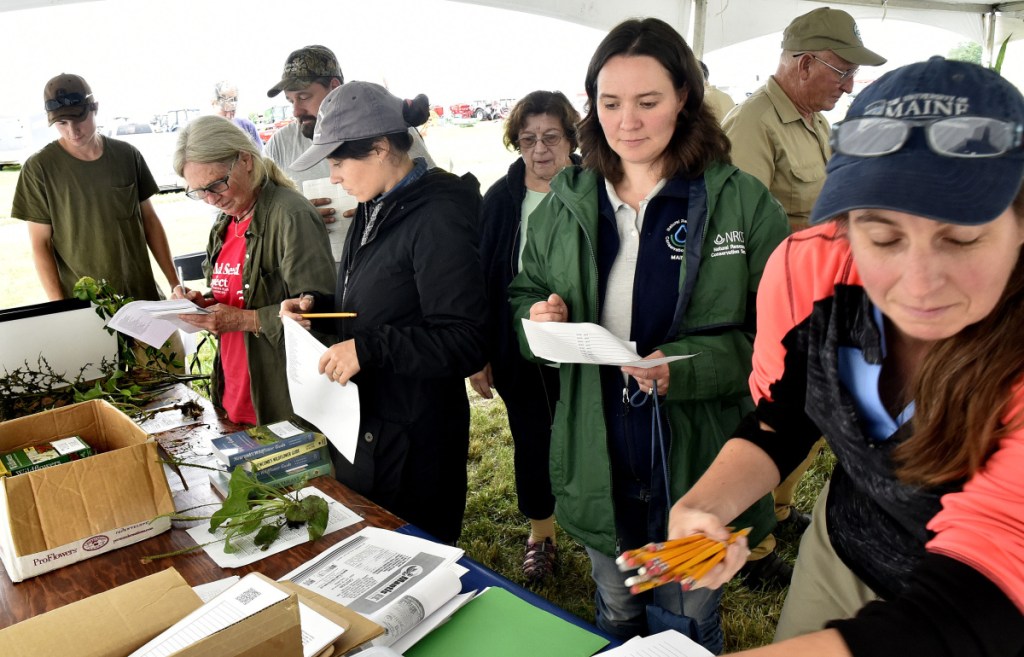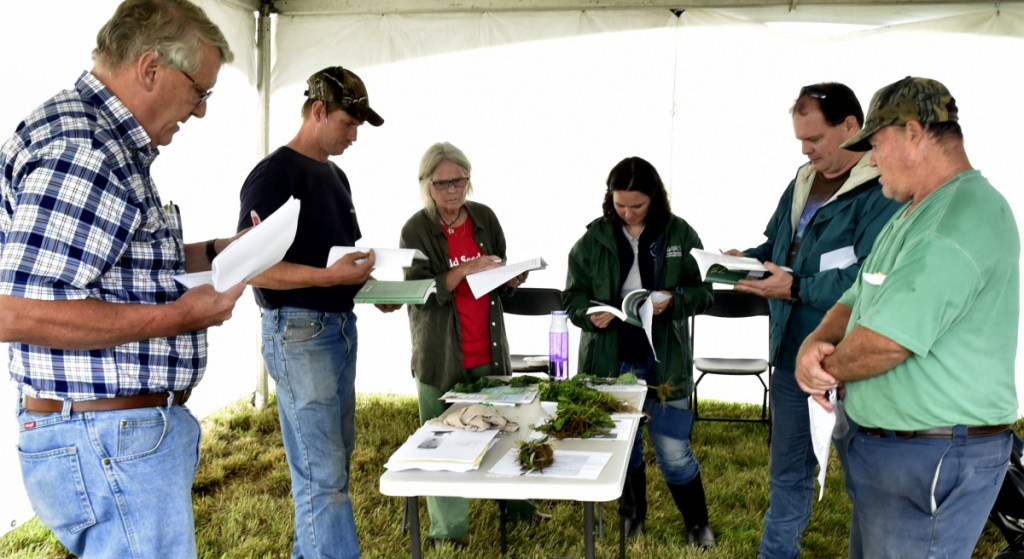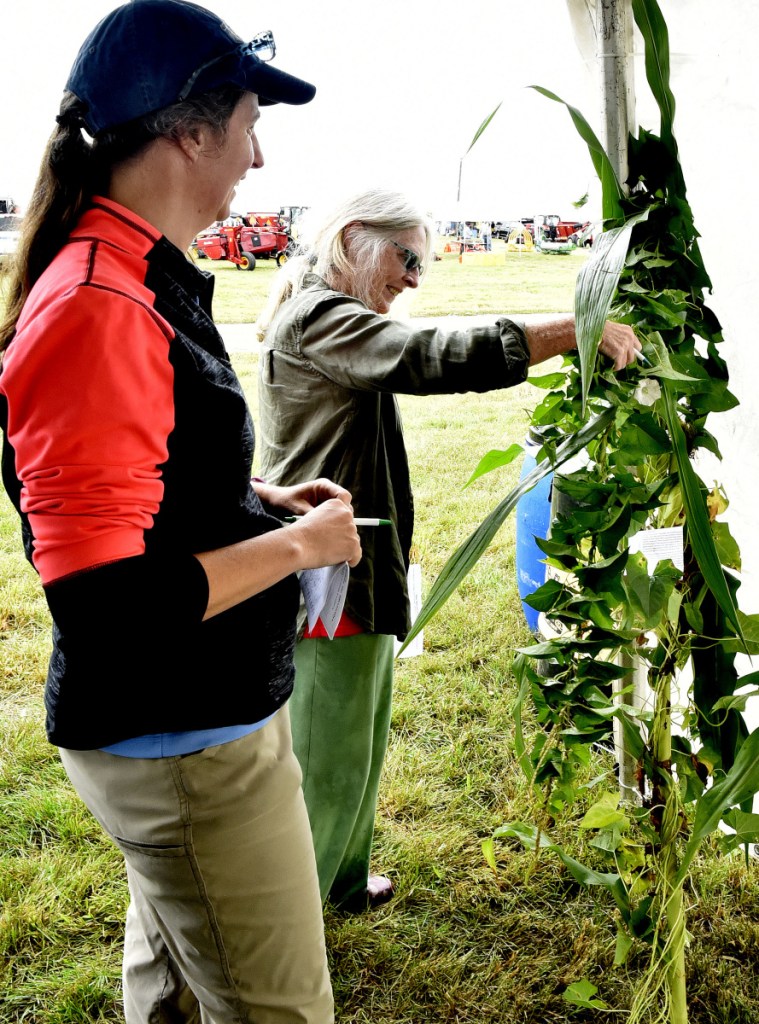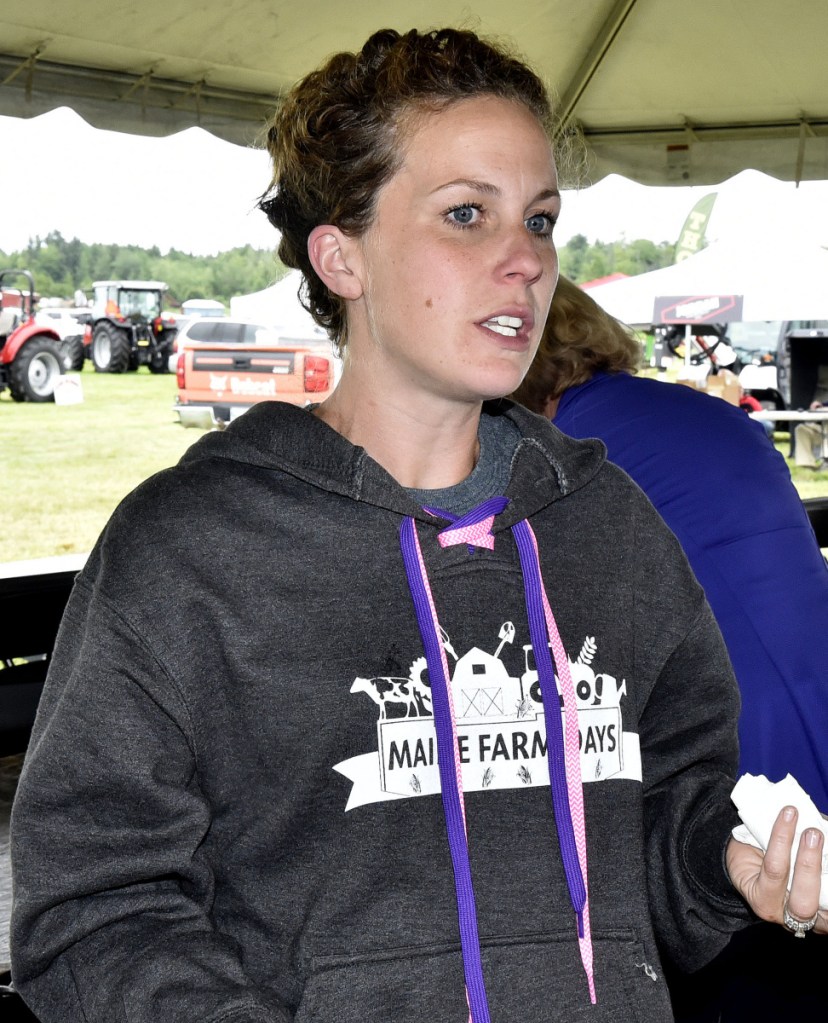CLINTON — Weeds are annoying and it may be tempting to just rip them out or mow over them without a second thought, but identifying what you’re working with can be a key step in getting the problem plant to go away for good.
That was the message Wednesday at Maine Farm Days, where University of Maine Cooperative Extension educator Caragh Fitzgerald gave a crash course in identifying weeds of central Maine to about two dozen people gathered under a tent to escape the rain.
“You’ll manage weeds differently depending on what they are and how they grow,” she said. “You’ll need to know, does it live for a single year? Does it live for multiple years? Does it grow low to the ground?”
Those kinds of questions can help agriculturalists, farmers and even the casual gardener decide what approach to take and, if they choose to use an herbicide, what treatment to go with.
Some weeds are easily identifiable to the naked eye, but others take more analysis.
The size, shape and texture of the leaves; color, number of petals and form of flowers; whether the plant grows horizontally or vertically; how the roots grow underground; and characteristics of the stem, such as whether it is woody or herbaceous, prickly or vine-like, are all features that can be used to identify weeds.
Fitzgerald said her favorite book that helps to identify weeds is “Weeds of the Northeast,” by Richard H. Uva, Joseph C. Neal and Joseph M. Ditomaso.
Resources that can be found online include the Natural Resources Conservation Service’s Plants Database, and Go Botany, a project funded by the National Science Foundation. Arboretums are also good and credible sources for weed identification, Fitzgerald said, as are the state’s cooperative extension county offices.
On Wednesday, Fitzgerald asked visitors at Maine Farm Days, an annual agriculture trade show that continues Thursday, to work through the identification of more than 20 types of weeds by looking at their flowers, leaves and roots.
Hildy Ellis, a project manager for the Knox-Lincoln Soil and Water Conservation District, said the workshop was helpful in providing some new identifications she will take back to her job at the conservation district.
“People call me all the time and say, ‘I have this weed spreading all over my yard. What can I do with it?’ Or they send me pictures. Mostly I know what they are, but sometimes I don’t, so this is a good opportunity to learn some new stuff,” Ellis said.
Once an identification is made, Fitzgerald said, a decision can be made about how to manage the weed. That could mean planting a cover crop if the weed doesn’t like shade, choosing to remove it by mechanical means such as pulling it by hand or mowing, or using herbicides.
“Anybody who is trying to manage weeds, or any plants in their landscape, will benefit from knowing exactly what it is they’re working with,” Fitzgerald said. “In the case of weeds, we want to discourage them from growing, so we want to know what conditions they don’t like. In the case of landscape plants, we want to encourage them to grow, so we want to set up the environment to be positive for them.”
Maine Farm Days has been held annually for the last eight years, said Kimberly Wright, whose family owns and operates Misty Meadows Farm, where the event is held.
She said in addition to being an agricultural trade show, Farm Days is also about education. It typically draws about 3,000 people over two days, though attendance Wednesday was dampened by the weather.
“Education is a huge focus for us,” Wright said. “When you can bring the public and the farming community together in one place, that’s when I feel some real education can happen.”
Rachel Ohm — 612-2368
Twitter: @rachel_ohm
Copy the Story LinkSend questions/comments to the editors.







Success. Please wait for the page to reload. If the page does not reload within 5 seconds, please refresh the page.
Enter your email and password to access comments.
Hi, to comment on stories you must . This profile is in addition to your subscription and website login.
Already have a commenting profile? .
Invalid username/password.
Please check your email to confirm and complete your registration.
Only subscribers are eligible to post comments. Please subscribe or login first for digital access. Here’s why.
Use the form below to reset your password. When you've submitted your account email, we will send an email with a reset code.